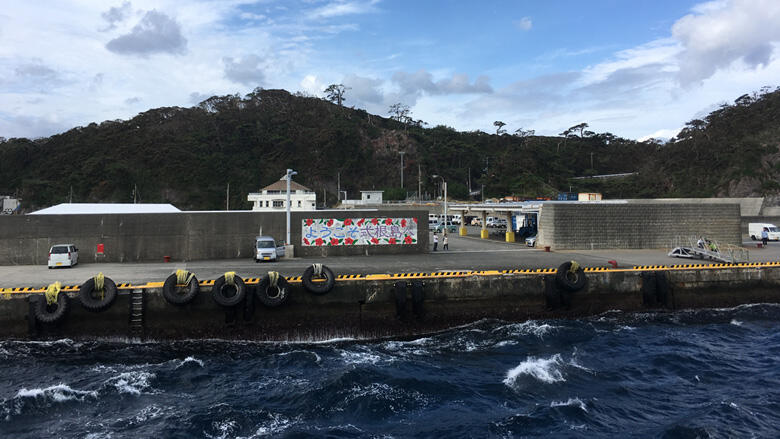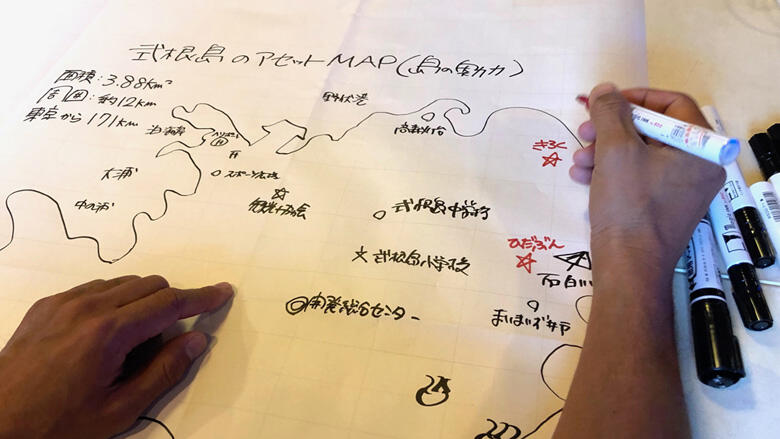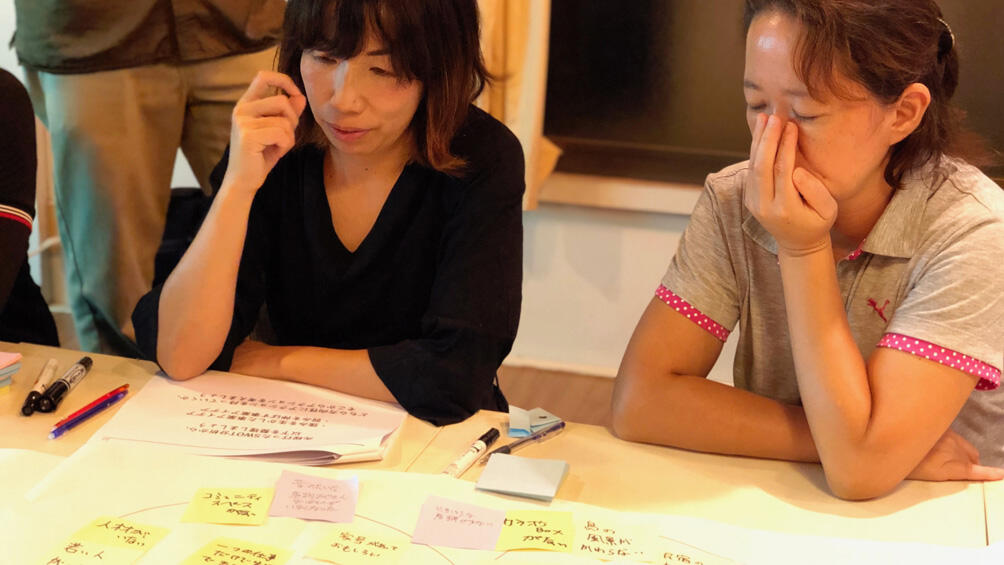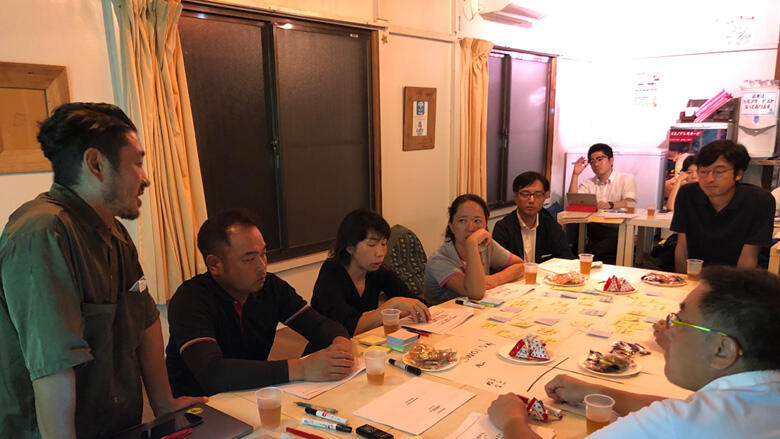3rd Island Meeting Held on Shikinejima

A sign that reads "Welcome to Shikinejima" can be seen at Nobushi Port, the entrance to Shikinejima.
The Tokyo Treasure Islands Project is a project which aims to refine the Tokyo's islands brands through "Shima-Kaigi" (Island Meetings) with residents. This report covers the third Shikinejima island meeting held on October 7.
>> Click here for more information on Shikinejima
Rediscovering the good old island by using data to grasp the current condition
To report on the task about gathering information regarding the current condition of the island that was assigned during the last session, the data on the visitor survey conducted by the chamber of commerce between April and September 2019 was announced at the beginning of the third island meeting. Most people chose "touring" as the purpose of their visit. Of the visitors who came for touring purposes, 36% were repeat visitors. Furthermore, those who have visited at least four times made up 50% of the repeaters.
Next, an asset (regional resource) map was created. Guest houses, vacant houses, stores, and hot springs were marked on a blank map to visualize the current state of the island.

The facilitator then focused on the geographic characteristics unique to small islands where the place of daily life is concentrated in the southeastern region and commented by saying, "Repeaters say that guest houses and stores left an impression on their visit. Experiences that condense the experience of warm interactions with people in a scenery reminiscent of good old Japan is something unique to islands. Isn't that one of Shikinejima's strengths?"
The keyword for the direction of Shikinejima's branding: People
The participants who shared the current situation began writing the regional resources on sticky notes. The ideas that were presented were then divided into strengths and weaknesses. Those categorized as strengths were further discussed as brand values. The discussion on ways to overcome items classified as weaknesses in order to increase their value also continued.

After categorizing the ideas into people, objects, and places, it was found that many of the strengths relate to people, such as how the people do everything on their own, how the people are warm and welcoming just like old times, and how the colors of the guest houses are unique.
Some of the weaknesses introduced include the extraordinarily busy peak season, many dining establishments closing due to the lack of human resources, and being unable to call in young people because there are no jobs that last throughout the year. The facilitator called to the participants for solutions: "We would like the discussions to continue so that the people living comfortably and energetically on the island can be used for branding."
Focusing on people to create a hub for interaction
During the discussion for a solution, detailed ideas such as developing a unique good to create year-round employment, creating a dining establishment run by the elderly who work in rotating shifts to offer local cuisines, and making the island a place for "work-ation," which is trending among the parenting generation, were introduced.

In response to the proposal of creating a communication space where the appeal of the people can be felt, ideas introduced include the island residents themselves becoming tour guides and creating a dining area adjacent to it. These ideas were collectively organized as creating a resting place and hub for the interaction among various people and was submitted as one of the action ideas.
Participant Yasuhiro Umeda said, "I'm glad that there is a place where we can talk a lot about Shikinejima. As the meeting progressed, I could feel the residents themselves trying to find good things about Shikinejima."
The next session will involve departing for the study tour in an effort to make "people" a part of the Shikinejima brand.


